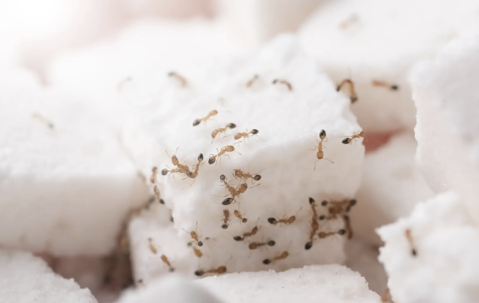Do Sugar Ants in South Florida Bite?
Stumbled upon a trail of ants chasing a lone crumb on your counter? Yep, those are sugar ants, lured by anything sweet.
They're more of a hassle than a hazard, leaving many wondering, "Do these little critters actually bite?" Well, sugar ants do have mandibles, mainly for toting treats or duking it out with other bugs.
Bites from them? Rare. And if they do chomp down, it's more of a tiny pinch—nothing to lose sleep over.
Curious about dealing with these uninvited guests? Stick around for the scoop on keeping sugar ants at bay.
Key Takeaways
- Sugar ants are tiny insects attracted to sweets but usually don't bite unless they feel threatened.
- Although these ants are generally not aggressive, they can contaminate food, create ant trails, and damage property.
- "Sugar ant" refers to various ant species, including odorous house ants, pavement ants, and pharaoh ants. All are attracted to sugary substances.
- Preventing sugar ant infestations involves keeping your home clean, sealing entry points, using essential oils, and considering professional pest control for severe problems.
Do Sugar Ants Bite?
In South Florida, "sugar ants" typically refer to different species of small ants attracted to sugary foods. They are not to be confused with the banded sugar ants from Australia.
Most of these ants do not aggressively bite humans, and their mandibles are typically used to carry food, not to harm.
However, it's important to note that while they might not commonly bite, many sugar ants can bite or sting if they feel threatened or defend their colony.
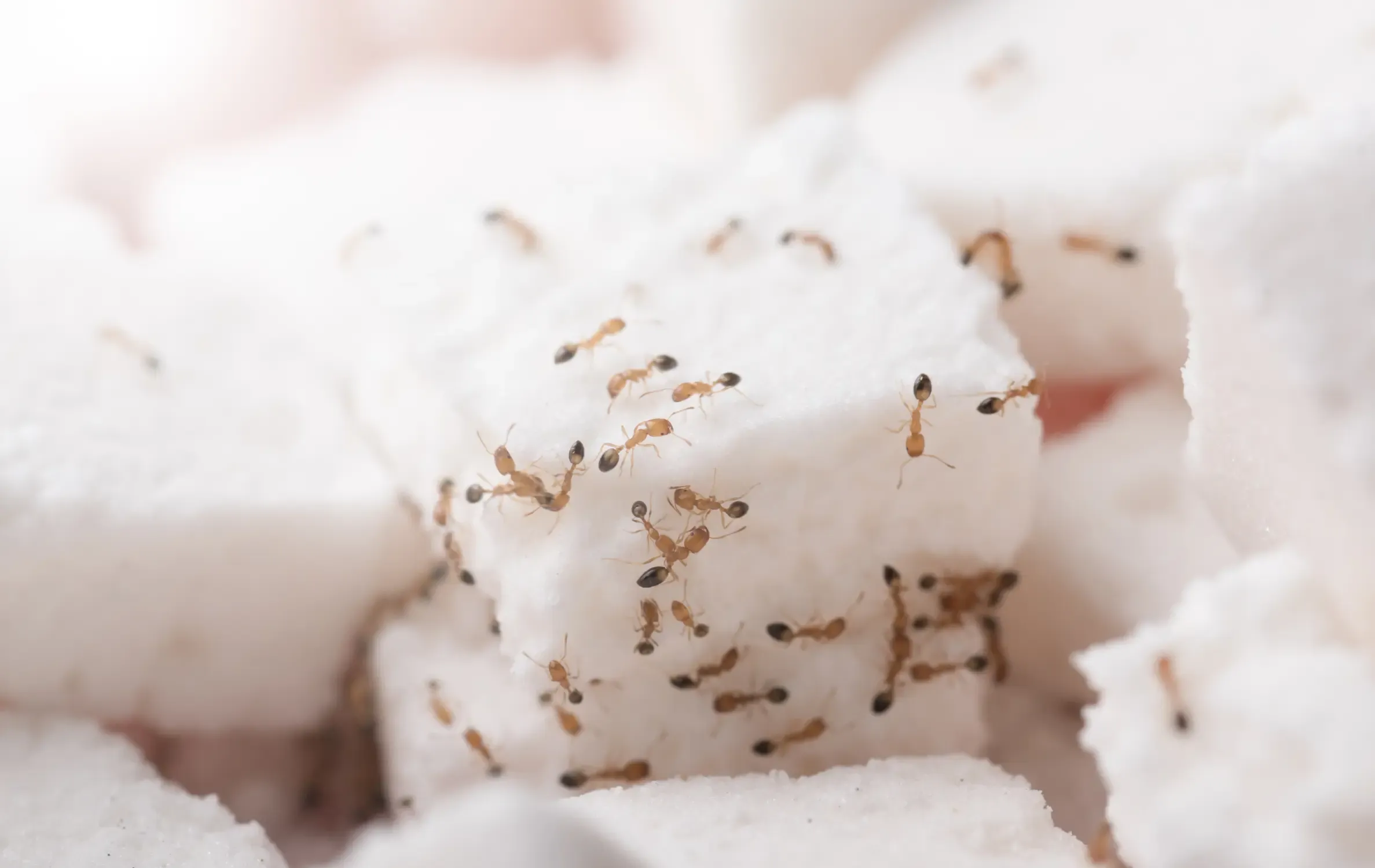
Understanding Sugar Ants
Sugar ants are a common term for tiny ants attracted to sweets, which can often be found in homes.
Identifying Sugar Ants
Sugar ants, often confused with other small household ants, have distinct characteristics.
These ants typically form sugar ant colonies that include various ants, such as worker ants responsible for food foraging.
Here is an empirical data to identify features specific to sugar ants:
Characteristics | Description |
Size | Generally small, ranging from 2 to 15 mm. |
Color | Can vary, often brown to black. |
Diet | Attracted to sugary substances, but these ants eat other foods in your home. |
Habitat | Prefer damp, dark environments close to food sources. |
Behavior | Active at night, known for long trails from the nest to food sources. |
Common Types of Sugar Ants
The term in South Florida often describes tiny ants attracted to sugar or sweet substances. Here are some types that are commonly referred to as sugar ants:
Odorous House Ants
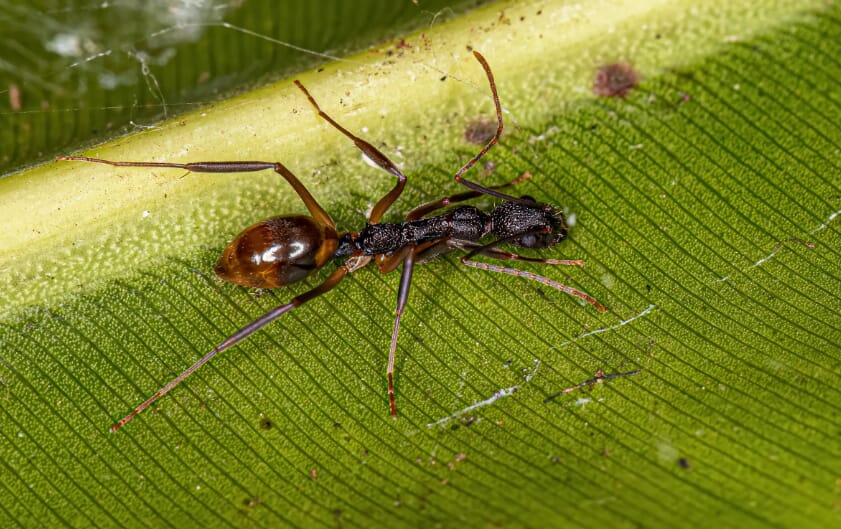
Odorous house ants (Tapinoma sessile) are small, brownish ants that commonly invade homes for sweet foods. They are known for the unpleasant odor they release when crushed, reminiscent of rotten coconuts.
Pavement Ants
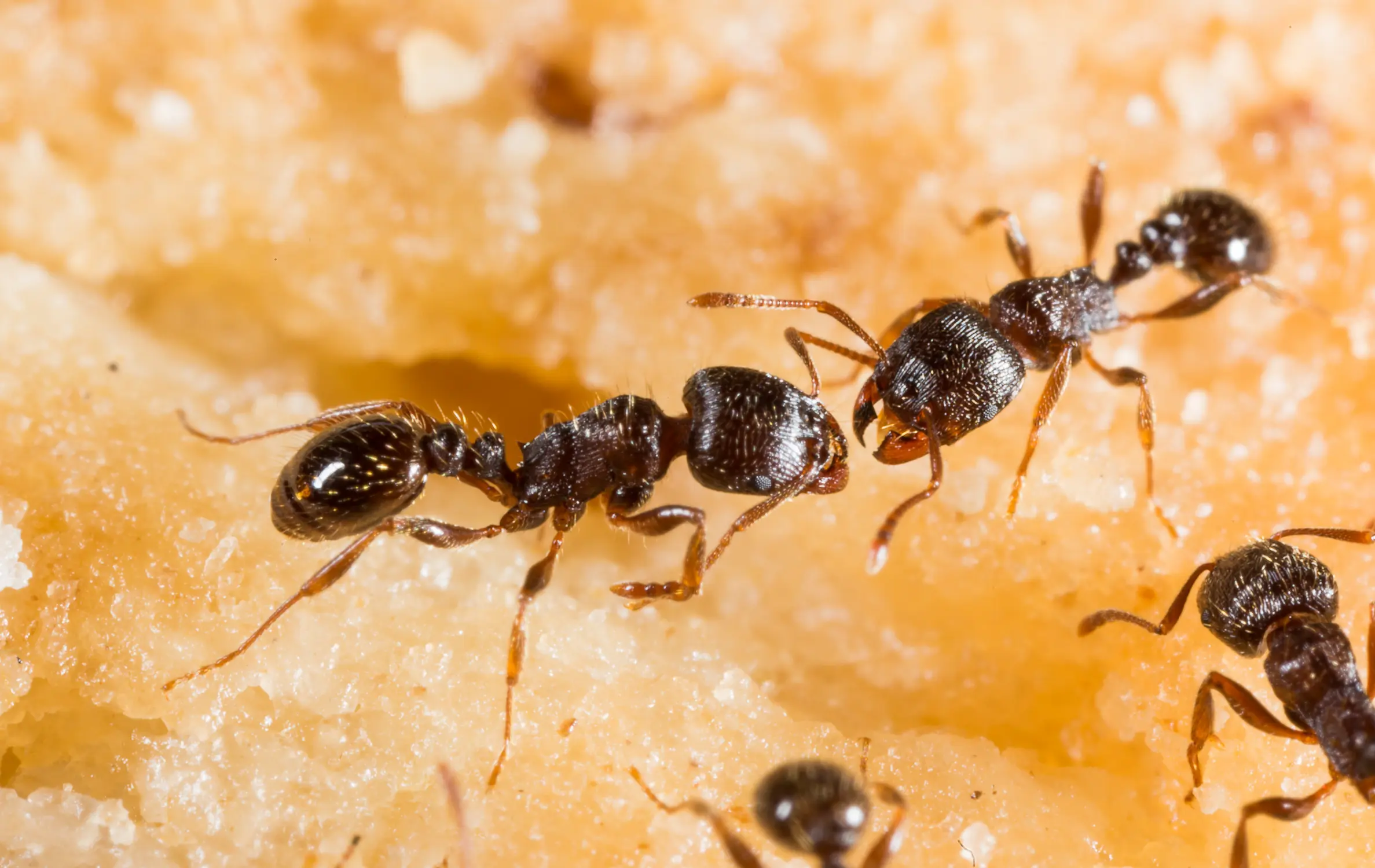
Pavement ants (Tetramorium caespitum) are small, dark brown to black ants with nests in or under pavement cracks. They are attracted to sweet foods.
Pharaoh Ants
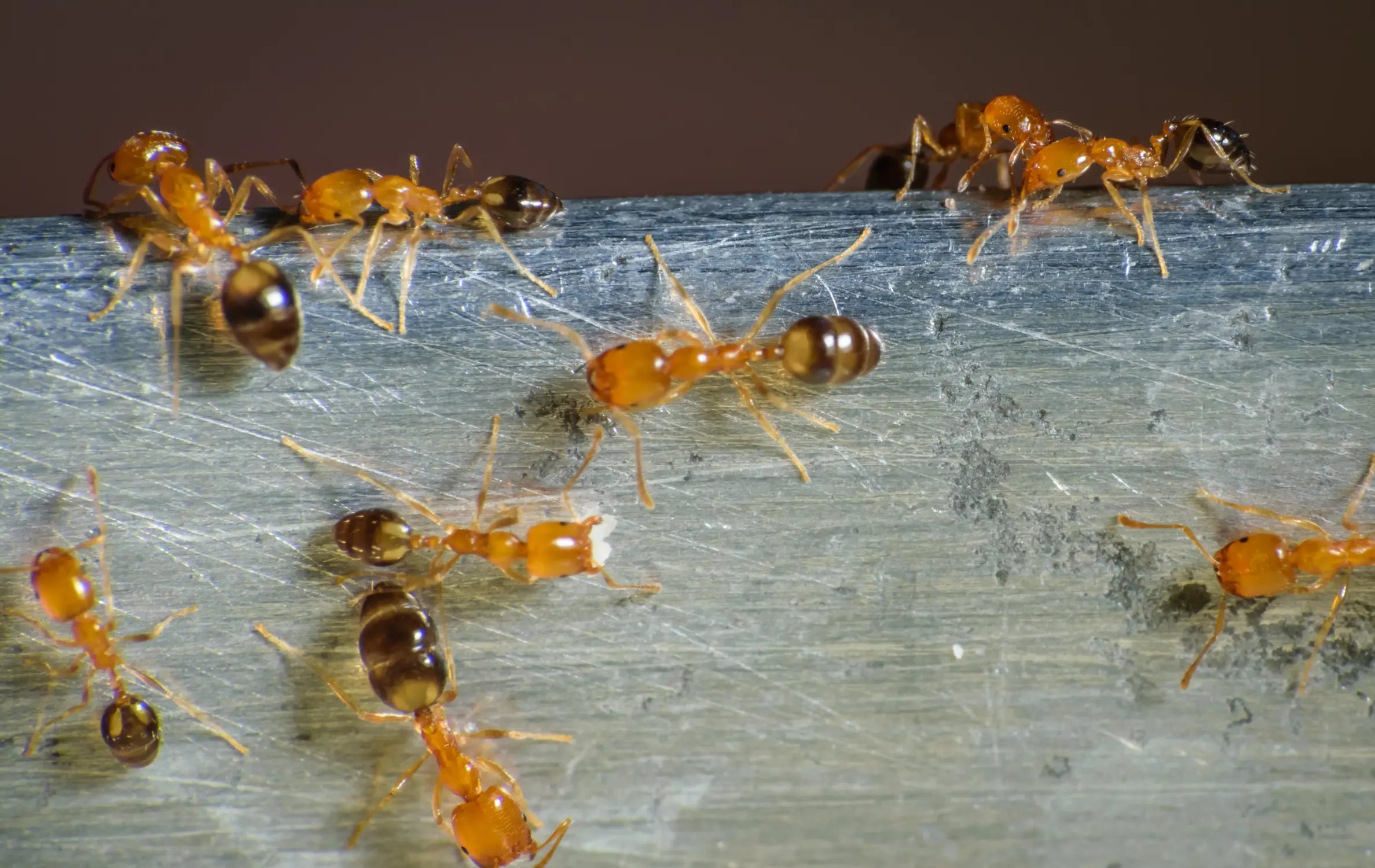
Pharaoh ants (Monomorium pharaonis) are small, light yellow to red ants known as notorious indoor pests. They often infest hospitals and other buildings, where they forage for sweets and other foods.
Argentine Ants
.2403281439550.png)
Argentine Ants (Linepithema humile) are small, dark brown ants that are highly adaptable and can form super-colonies. They have a sweet tooth and often trail to sources of sweetness in homes.
Little Black Ants

True to their name, little black ants (Monomorium minimum) are small and dark-colored. They are common household pests in the United States and are attracted to sweets, fats, and oils.
Signs of Sugar Ant Infestation
As you keep an eye out in your home, here are the key signs that might indicate you’re battling a sugar ant infestation:
1. Visible Ant Trails
It is often the first sign of an infestation. One may observe lines of ants traveling towards a food source. They prefer sugary and sweet foods on countertops or in food storage areas.
2. Accumulation of Earthy Materials
Sugar ants often create large dirt hills outside, which can indicate their nesting sites. Small piles of earth or sand in voids or crevices might signal their presence on your property.
3. Sighting of Scout Ants
Individual ants can be seen scouting for food. These lone ants search entry points to inform the rest of their colony about potential food and water sources.
4. Aphids and Other Insect Farming
Sugar ants are known for farming aphids and caterpillars for their secretions.
If you notice an unusual number of these insects on plants, it could be due to sugar ants cultivating their honeydew—a clear sign of infestation.
5. Structural Damage and Nesting
Sugar ants can cause damage as they establish their nests. Evidence of this could be found in wooden structures or between walls where voids may form ideal nesting spots.
6. Disruption in Outdoor Areas
Large dirt hills and disturbed soil in gardens or lawns may indicate outdoor nesting, which can often precede indoor infestation.
Preventing Sugar Ant Infestations
To protect your home and get rid of sugar ants, implement both home remedies and consider professional pest control solutions when necessary.
These actions help maintain a barrier against these persistent pests.
Home Remedies and Preventative Measures
A variety of natural and practical steps can be taken to prevent sugar ants from invading:
- Seal Entry Points: Thoroughly inspect your home for cracks and crevices. Use silicone caulk to seal any potential entry points for the ants.
- Cleanliness: Keep your kitchen and dining areas free of crumbs and spills. Regular sweeping, vacuuming, and wiping down surfaces can deter sugar ants.
- Food Storage: Store food in airtight containers and keep ripe fruit in the refrigerator to avoid attracting ants.
- Essential Oils: Ants dislike the scent of specific essential oils, like peppermint or lemon. Place a few drops on cotton balls and position them at suspected entry points.
When to Consider Calling in the Pest Control Experts
You sometimes face the challenge of sugar ants in your homes. These little critters are often just a nuisance, but sometimes the situation gets out of hand.
At that point, you might need to consider hiring professional pest control companies (like us at Native Pest Management) to do the job!
